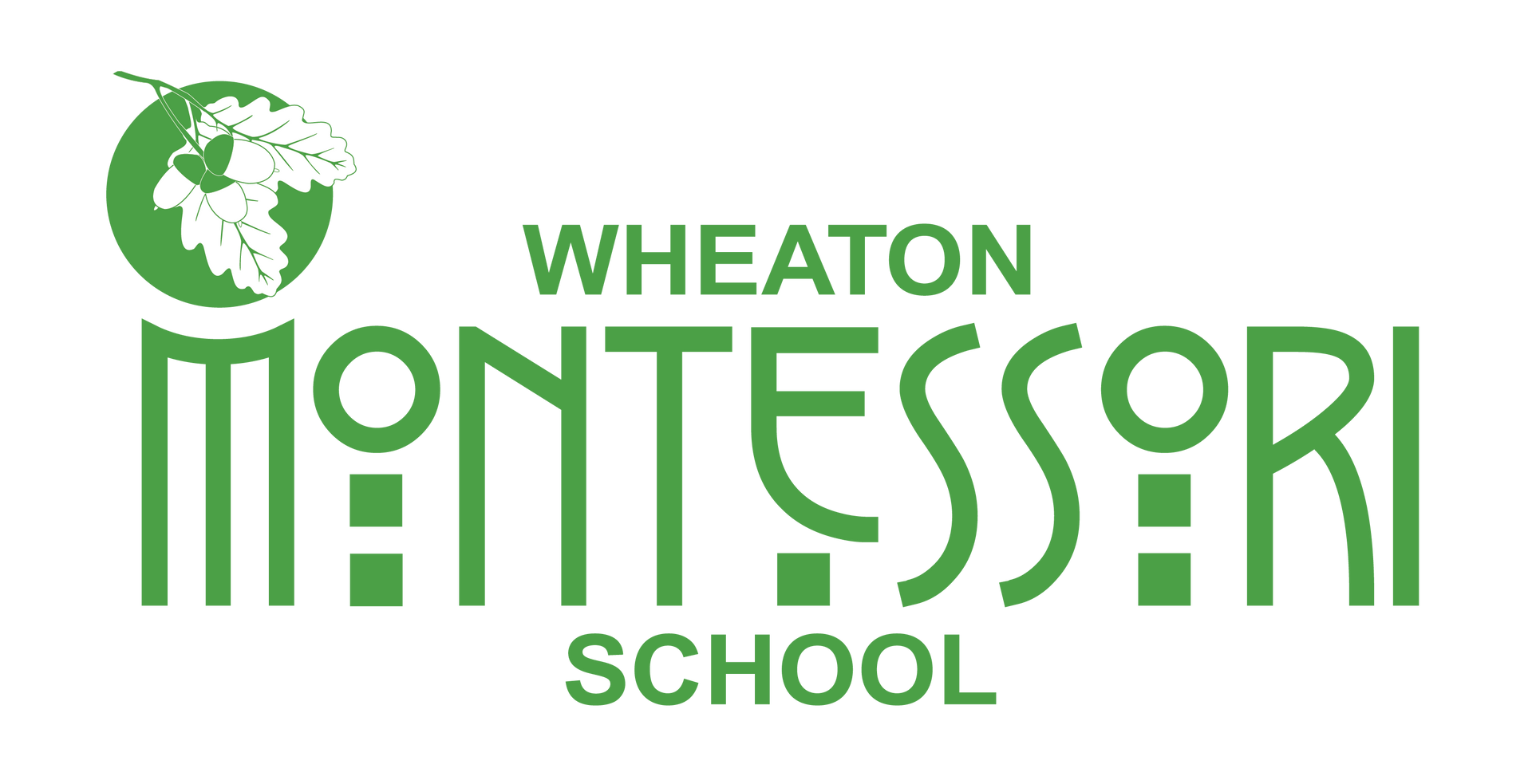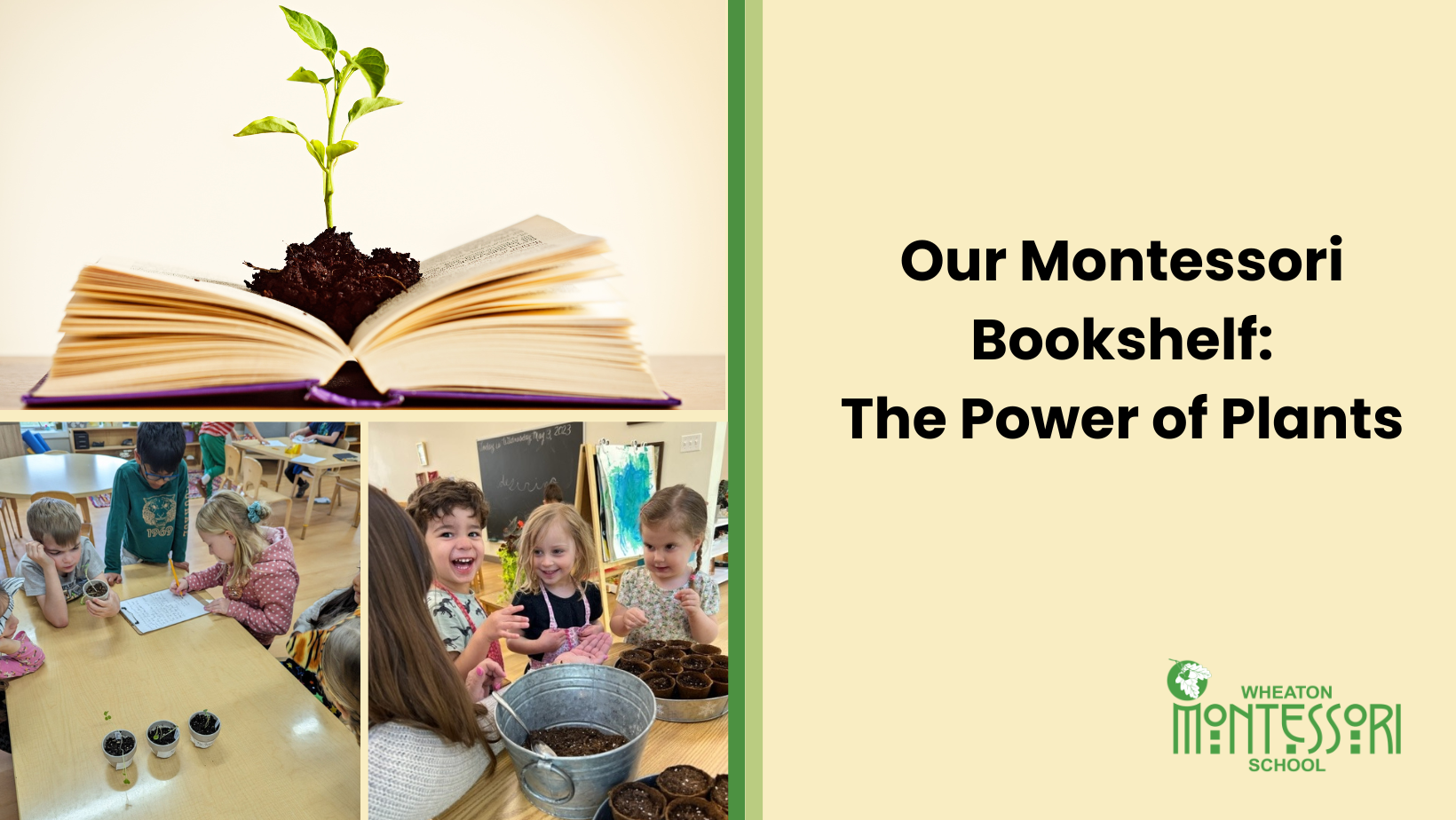
Why do we introduce cursive writing at Wheaton Montessori School?
Educators and parents often assume that the manuscript alphabet is the most appropriate method of introductory handwriting instruction for the young child. We are often asked why we insist on introducing the cursive alphabet in our Montessori classrooms. I explored this topic in-depth for a research project and would like to share my findings with you.
Until the 1920s cursive was the only method of handwriting taught in U.S. schools. Margaret Wise is credited with introducing a “stripped-down” version of the alphabet – manuscript letters – to British and American schools in 1922. Very quickly, manuscript became standard kindergarten and first grade curriculum. However, Ms. Wise eventually reversed her position, having found that manuscript was not a good foundation for cursive writing. Her withdrawal of support did not convince the schools to abandon the sizable investment they had already made in materials and in training their teachers in manuscript instruction. The manuscript alphabet was never intended to replace cursive handwriting, but was used because educators felt the ball-stick construction was simpler to learn, and that it might aid children in reading because the manuscript letters were similar to the print in books.
Using the manuscript alphabet as the introduction to writing, however, meant that somewhere along the line the child must make the transition to the cursive alphabet. This has proved, over the years, to be a difficult and arduous task for the child. Unfortunately, this transition is wholly unnecessary, for as Montessori children over the past 100 years have proved, a very young child is capable of learning the cursive alphabet with ease and joy. In fact, most of the non-English speaking world does not teach ball-stick manuscript at all. Furthermore, research indicates that the cursive alphabet is much easier for the child to master than the manuscript alphabet. The flowing, left-to-right motion of cursive letters are more natural to the hand than the ball-stick letters. Due to the continuous movement from left-to-right, children do not reverse cursive letters as easily manuscript letters. (This is especially important to a child with dyslexia/dysgraphia.) With few exceptions, all cursive letters begin at the base line and do not require the child to repeatedly stop and start. Cursive letters look very different from each other and are therefore more easily distinguished. Perhaps most importantly, the young child is attracted to the beauty of the cursive alphabet. This leads to a lifelong love of writing.
From an epistemological point of view, the cursive alphabet lends itself to clarity of thought. Cursive words are formed on a continuous line, allowing the child to experience the word as a whole, the elements of it (the letters) flowing together to express a complete thought. This in turn helps the child automate the mechanics of writing so that the child’s energies are invested not so much in the mechanism of writing but in deciding what to say.
There is no evidence to show that children who start out learning cursive have difficulty reading the print in books. Indeed, according to several studies and informal surveys, adults who learned cursive exclusively as children reported that they had never experienced difficulties in associating their cursive writing with book print. However, a child who has learned only manuscript cannot read cursive.
I ask you to think about your own experiences in handwriting instruction. Most of us were instructed first in manuscript, and later (around 3rd grade) in cursive. What we learn first becomes ingrained in us, and now most adults taught according to these methods write in a combination of print-cursive. While our handwriting may be unique and individual, it is not as beautiful as it might have been nor do we have the joy in writing we might have had.
What if my child will go on to first grade in a school where they teach the manuscript alphabet?
Unfortunately, many schools’ curriculums are not flexible enough to allow your child to continue writing in cursive. If, during the third year at Wheaton Montessori School, your child has mastered cursive writing, we can introduce the manuscript alphabet, helping to ease the transition to first grade. However, even if this is not possible, rest assured that the transition from cursive to print is much easier than the reverse. And when your child reaches the stage where cursive writing is introduced, he will have a much easier time thanks to his previous experience in cursive.


